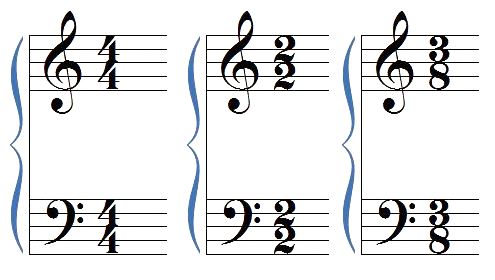This page provides lots of links such as videos, podcasts and articles. These links explain counting, intervals, scales, pitches, overtones, patterns, symbols, harmonies and tones. This site has gathered lots of links from trusted sources ( Such as Tedx Talks)
The AMS ( American Mathematical Society) has lots of articles of how math and music are similar. They have listed over 20 links to trusted sources such as universities like “Rice University” (William Marsh Rice University). I think I will use this page as a place where I can gather extra information from links that I might’ve missed when researching for my topic.

4/4 = 4 quarter notes (4) in a measure. 2/2 = 2 whole notes (2) in a measure. 3/8 = 3 eighth notes (8) in a measure.
